When Martin Luther King Jr's assassin fled to London
- Published
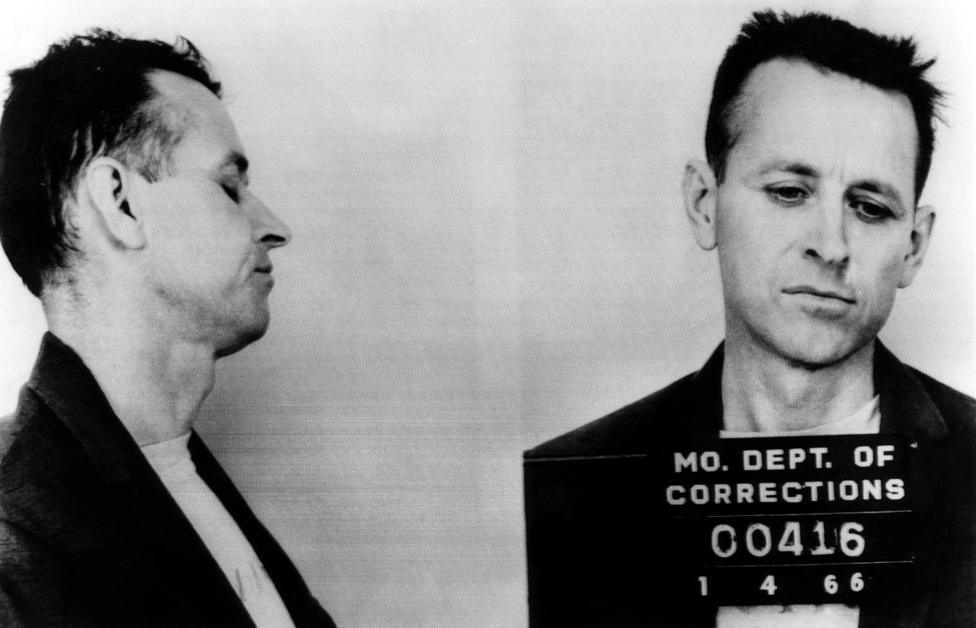
The shooting of Martin Luther King Jr is one of the most infamous murders in American history. For two months, the FBI scoured America to find their prime suspect - the small-time criminal James Earl Ray. Yet when he was arrested on 8 June 1968 it wasn't in the US but thousands of miles away in London. Almost half a century on, people who met Ray in England have been telling their stories.
Entire books have been written about the role James Earl Ray played in the assassination of Dr Martin Luther King Jr in Memphis, Tennessee in 1968. Some believe the facts are just as history records: that Ray, working alone, fired a single shot from a high-velocity rifle which killed the civil rights leader as he stood on the balcony of the Lorraine Motel.
Others have worked hard to prove Ray was an innocent fall-guy. And there are those who suggest he was a small cog in a wider conspiracy who realised too late he'd been set up to let the main conspirators get away.
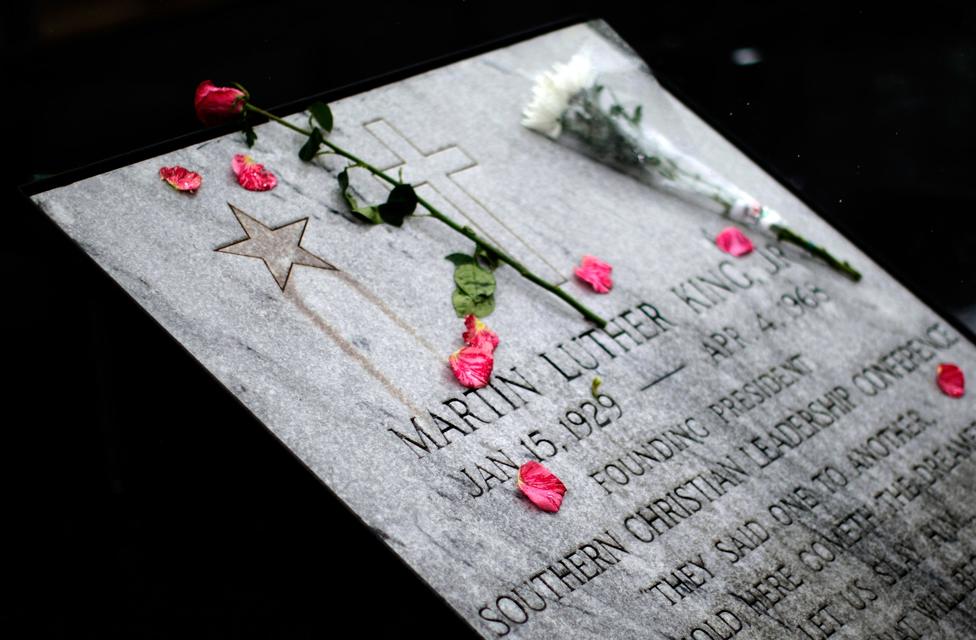
Almost everyone accepts that shortly after the assassination Ray was heading out of Memphis fast.
He later claimed he'd heard on the radio that police were seeking a man of his description travelling in the type of car he was driving - a white Ford Mustang. He had been near the motel shortly before the murder and though entirely innocent of the crime, his later story went, he dumped the Mustang and made his way by train and bus across the Canadian border to Toronto. He arrived on 6 April, two days after Dr King's murder.
Eventually Ray acquired a copy of the birth-certificate of Canadian citizen Ramon Sneyd. He used it to obtain a Canadian passport but a clerical error meant it was issued in the name of Ramon Sneya (that mistake would eventually prove Ray's downfall).
On 7 May he took a flight from Toronto to Heathrow airport, London. A few hours later he flew on to Lisbon, Portugal.
James Earl Ray would later explain he'd wanted to secure a sea-passage from Lisbon to Africa. He planned to be a mercenary and disappear in a country which had no repatriation deal with the US.
In Lisbon, Ray persuaded the Canadian embassy to issue a replacement passport with the name corrected to match the Sneyd birth-certificate. But his African idea got nowhere and on 17 May he flew back to London. Ray was now in urgent need of a Plan B.
Jane Brookes says she doesn't now recall the moment she first set eyes on "Ramon Sneyd" at the hotel in Penywern Road, Earl's Court where she'd only recently started as receptionist.
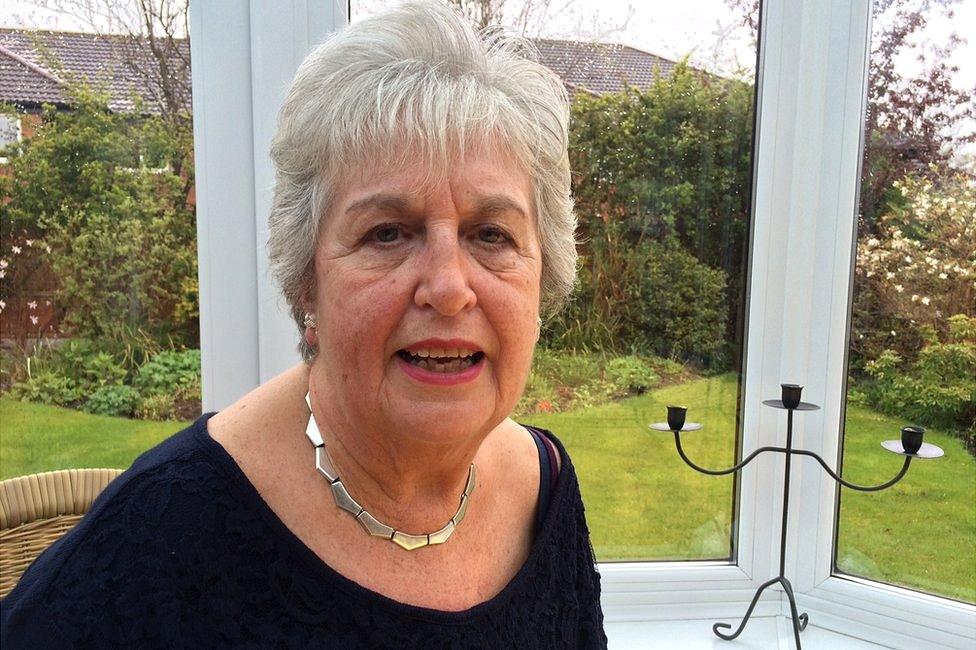
Jane Brookes was the receptionist at a hotel in Earl's Court when "Ramon Sneyd" checked in
"In those days people just walked in and asked if there was a room - this was long before computers. The New Earls Court Hotel was never the most salubrious place and almost no one pre-booked." A room was less than £2 ($3) a night.
There didn't seem anything very noteworthy about James Earl Ray. "Except I did spot his southern US accent which was odd as he registered with a Canadian passport. But he just said he'd been living in Canada for some time.
"He was tall and thin and quite dark and not especially good-looking. At first I didn't think there was anything very striking about him. He was smartly dressed but he often seemed nervous. He didn't go out very often and I do remember he had difficulty understanding British pre-decimal currency and the underground system.
"I was only 21 and not really interested in news: I had no reason to connect him to any great world event. And I'm afraid at the time I didn't even know who Martin Luther King was."
But one day Ray approached Jane Nassau, as she then was, to ask for help making a telephone call to the Daily Telegraph.

Find out more
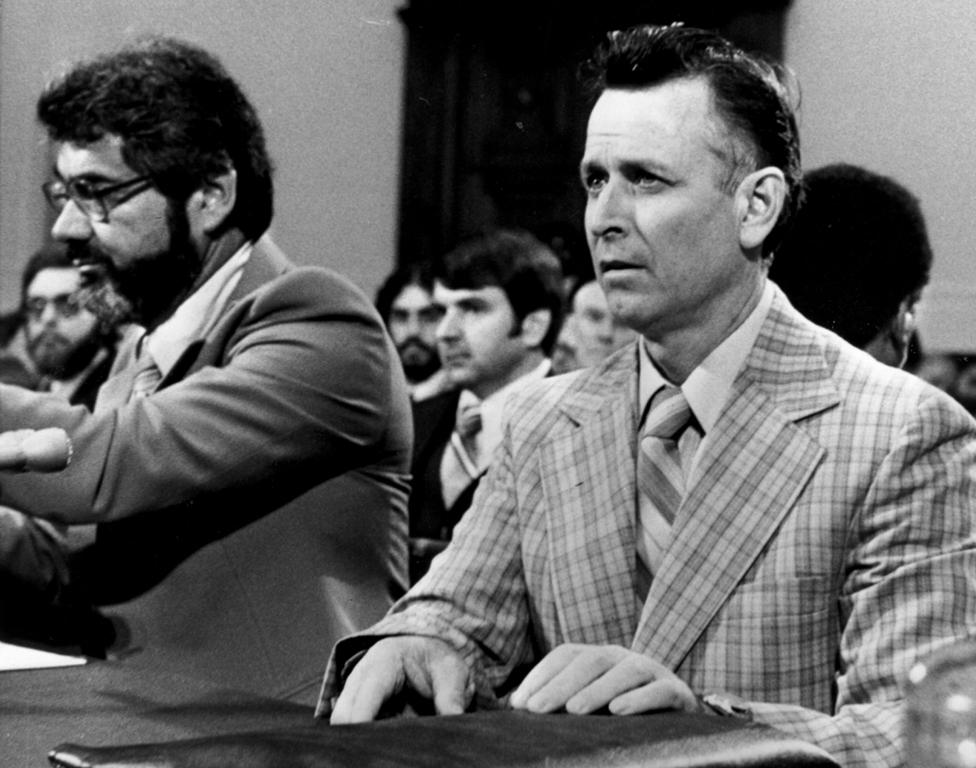
The Arrest of James Earl Ray was broadcast on Witness, for the BBC World Service, on Monday 6 June - listen to it on BBC iPlayer Radio.

"That did seem a bit odd for someone I assumed was just passing through London. But I got him through to the newsroom - and then I listened in, which I know was cheeky of me.
"He had a conversation with a journalist and I heard him ask about possible contacts with a view to becoming a mercenary in Africa. So now there did seem something more intriguing about him - although I don't think I really understood what a mercenary was."
The journalist on the Telegraph foreign desk was the late Ian Colvin. Later, in a BBC interview, Colvin said he'd tried to dissuade the caller from becoming a mercenary, telling him "the day is past". But finally Colvin gave him the name of someone in Brussels who might have contacts in the Congo.
After a few days Ray moved on from the New Earls Court to another hotel. Later the BBC was to phone Jane to ask her about the man who had now been arrested in connection with the death of Dr King. "I was on TV news and in demand with journalists. I even got into Time magazine and had a couple of offers of marriage because of it."
Some who've studied Ray's movements after the assassination ask how a small-time crook had the funds to survive a month in Canada and then fly to Europe. What is clear is that by the time Jane Brookes knew him he was getting low on cash.
On Tuesday 4 June he used a pistol to raid the Trustee Savings Bank at 179 Earls Court Road but made off with only about £100. A week earlier there had been an even less successful raid - on a small jewellery store in Praed Street, Paddington run by Maurice and Billie Isaacs. Their daughter Valerie Goldston later heard the story from her parents.
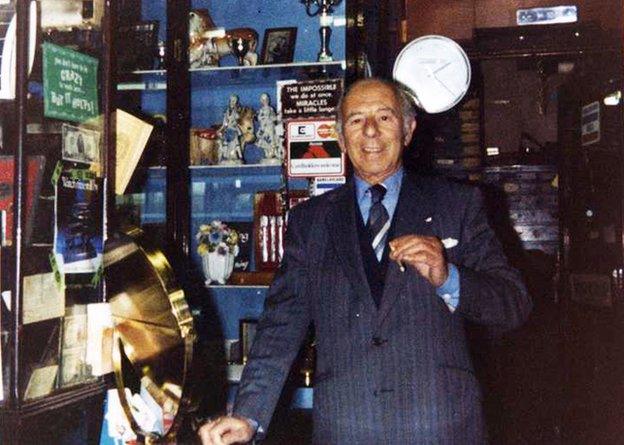
Maurice Isaacs and his wife Billie managed to thwart a burglary attempt
"Paddington Jewellers was an old-style mahogany and glass high street jewellery store. It was only just before the incident that my father had put in a bell as an alarm system. It wasn't sophisticated but it's part of what scared Ray off.
"My parents were just closing up when a man walked in and the next thing they knew he was brandishing a handgun. The man, who was clearly American, told them to get in the back room but my father wouldn't comply: I think at first he wasn't sure it was a serious attempt at a hold-up. But my mother decided she wasn't going to let this man harm my father and she ran at him.
"My father knocked the gun into the air and then managed to press the button on the floor to set off the newly-installed alarm. So then all hell broke loose and I suspect James Earl Ray was astounded to find two OAPs getting in his way and all this chaos. So he ran off with nothing."
When detectives later told the Isaacs the man might have been the murderer of Martin Luther King Jr, Valerie Goldston says at first they simply didn't believe it.
"They thought why on earth would the murderer be in London? But when they were shown pictures of Ray they identified him from the raid. Scotland Yard asked them not to prefer charges, which they could have done: it would have hampered Ray going back to America. So they just didn't speak about him."
Ten years later the family had further unexpected contact with the story.
"A committee of the US House of Representatives was taking a look again, to investigate the possibility of a conspiracy. One day when I was serving two big town cars turned up outside the shop without warning. Then these Americans in black suits came in and asked me to lock the door behind them. It was like a scene from a film. They wanted my parents to fly to Washington to give evidence to the government committee. My father refused to go, which seemed to astonish them."
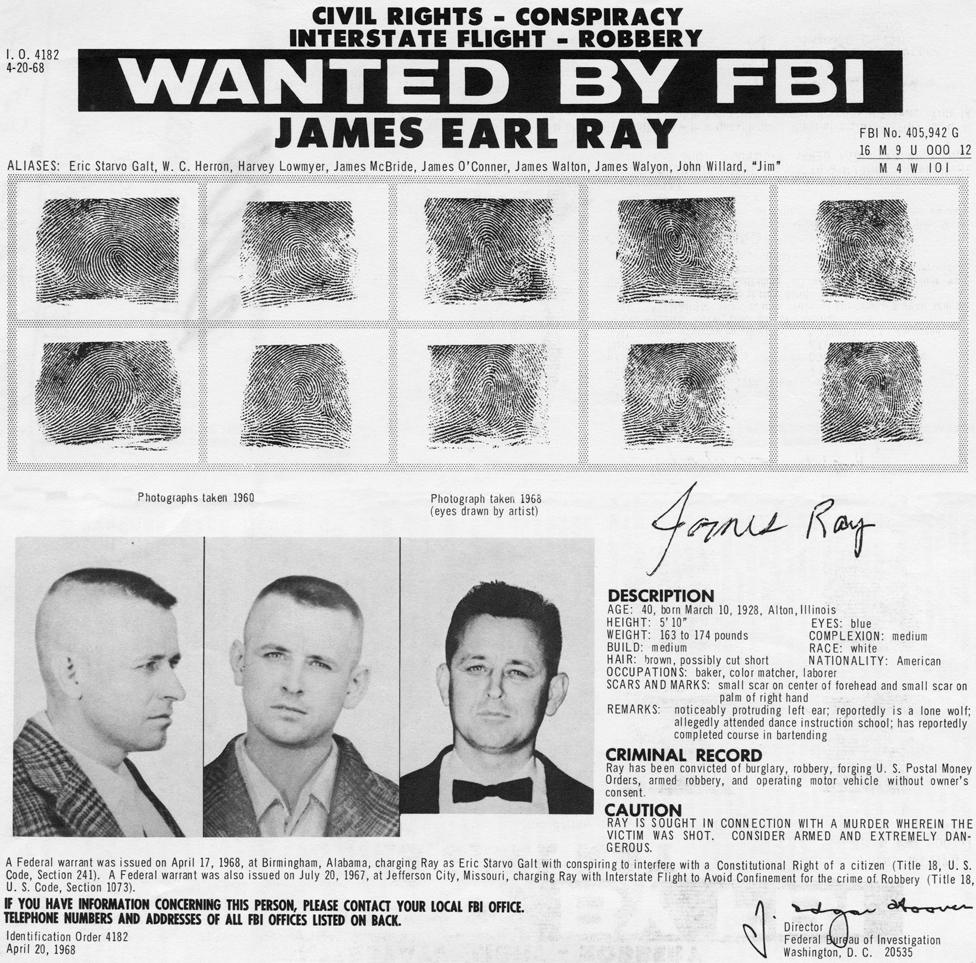
By the date of the failed raid in Paddington (27 May), the FBI - with assistance from the Canadians - knew of the Sneyd alias and that Ray had flown to London.
Today, the way in which Ray was finally apprehended at Heathrow appears strangely dependent on chance and one man's attentiveness. But Kenneth Human, the 83-year-old retired immigration officer who stopped Ray, says it's how things were in the pre-digital age.
Ray had taken Ian Colvin's advice and bought a ticket on BEA to fly to Brussels.
On Saturday 8 June Human was carrying out embarkation formalities at Heathrow Terminal Two, checking passports as passengers headed for their flights.
"It was a small area and there was always pressure to keep the queue moving. The slightest delay and you'd find a backlog building almost at once. In fact I was already following Ray's progress - not because he looked suspicious but his height and the way he was dressed in dark clothing made him a good way to follow how the queue was progressing."
"99.9% of passengers would always have their passport ready in their hand when they reached the embarkation desk. But this man didn't: he put down his hand-luggage and pulled rather a large wallet from his inside pocket. He opened it up very precisely and went to the documentation section. He took out a blue Canadian passport and handed it to me - everything he did was very purposeful and there was no hint of nerves.
"But I'd caught a glimpse of something you didn't expect: the top corner of another Canadian passport underneath the one in the wallet he handed me, which was in the name of Ramon Sneyd. So without asking his permission I took the second passport out and asked what it was. He explained it was an old cancelled passport and that it had been issued with the name misspelt as Sneya.'
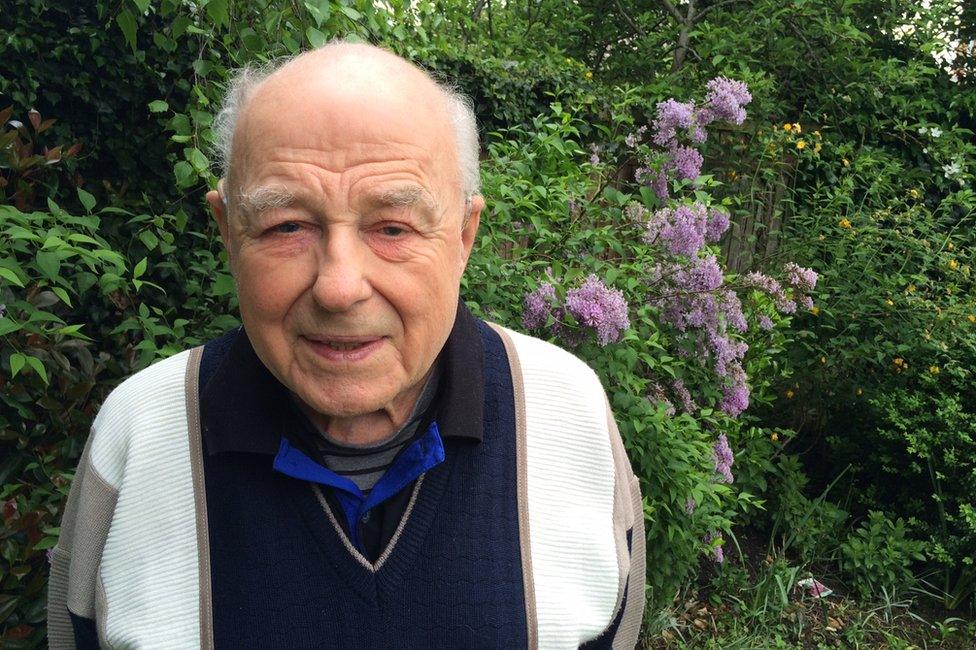
Kenneth Human was working as an immigration officer - and managed to stop Ray
Kenneth Human says it still puzzles him why Ray had the earlier passport visible in the wallet. "I think he may have been making some attempt to cover it up but if he'd just put it in his pocket somewhere I would never have seen it and would almost certainly have stamped his passport and waved him through because he had an entry stamp from Portugal. We did have a Suspect Index of people to look out for - but the name Sneyd wasn't in it."
Working alongside Human was a Special Branch officer - but he says normally the police only got involved if the embarkation officer had identified a problem. "But suddenly the Special Branch man said quite dramatically that he was a police officer and wanted to ask the man some questions. So off Ray went with the policeman and I didn't see either of them again. But it was obvious Ray was taking everything in his stride. He didn't show signs of panic at any point."
Before long Ian Colvin, Jane Nassau, Maurice and Billie Isaacs and Kenneth Human all realised that - however improbably - they had had encounters with the most wanted man in America.
Scotland Yard ensured the two armed raids were quietly forgotten about and on 18 July 1968 James Earl Ray was flown back to America under FBI guard.
What happened after that is another story and a complex one. Ray initially pleaded guilty to the murder of Dr King but almost at once sought to withdraw that plea. But because he'd admitted to the crime there was no full trial and James Earl Ray spent the rest of his life in jail. He died in 1998 at the age of 70.

More from the BBC
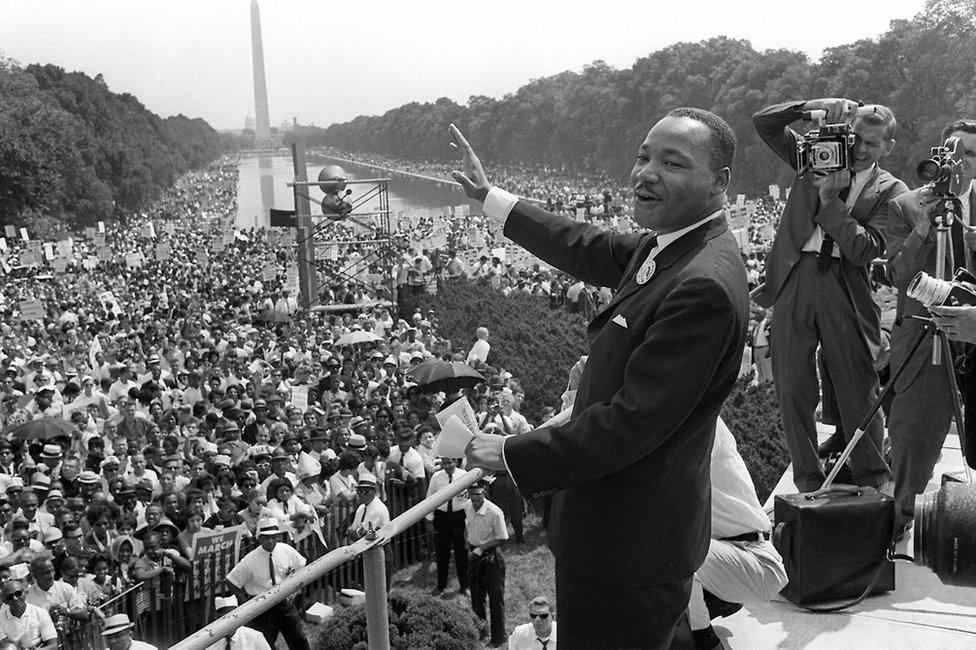
Martin Luther King: I have a dream revisited (August 2013)
Has Martin Luther King's dream come true? (August 2013)
Martin Luther King and the race riot that never was (August 2013)
